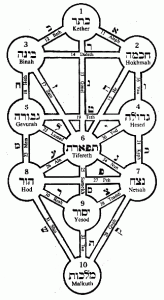Friday, May 23: Bandersnatches
THE KABBALAH OF CRIME FICTION
by Steve Steinbock
If you look in the spice cabinet of crime writing, you’ll find a variety of ingredients: action, character, plot, emotion, witty banter, intellectual challenge, and cats. A story that uses all of these will taste pretty nasty. But some authors and their readers, like chefs and diners, will go heavy on the ginger, while others will avoid it altogether.
This goes back to my grandmother’s old adage about chocolate and vanilla. I’ve used this forum numerous times already to explore tastes and subgenres, but I have a slightly fresh spin.
Yesterday I read a short story that was very cleverly plotted, but had a style and characters that were somewhat stale. Meanwhile, in my car, I’ve been listening to a thriller written by a woman whose style is powerfully emotional, but her plots are pedestrian and predictable.
For the past twenty years, the more popular mystery series have been those that emphasize character traits as they develop from book to book. Writers are more focused on writing about the personal life of the detective – her parents, children, pets, illnesses, romantic ups and downs, and alcohol abuse – than on plot or action. A survey of the forums at Amazon confirms that mystery consumers care deeply about series-wide character development.
(On the one hand, I find this trend pretty silly. In the good old days, you could pick up any Agatha Christie, Rex Stout, or Erle Stanley Gardner novel, whether written in 1931 or 1958, and you’d find a dependable Miss Marple, Nero Wolfe, or Perry Mason the same as in every other book of the series. On the other hand, I admit that I’ve gotten caught up in the lives of characters like Block’s Matthew Scudder or Lippman’s Tess Monhaghan.)
 Over the years I’ve taught a number of classes on Jewish mysticism. (No, Madonna wasn’t my student, and yes, Kabbalah is older than MTV). The Kabbalistic concept that I have the most fun with is that of the Ten Sephirot of the Tree of Life. This, according to medieval rabbis, is the design that represents not only the attributes of God, but the very DNA pattern of everything in creation. That includes crime fiction.
Over the years I’ve taught a number of classes on Jewish mysticism. (No, Madonna wasn’t my student, and yes, Kabbalah is older than MTV). The Kabbalistic concept that I have the most fun with is that of the Ten Sephirot of the Tree of Life. This, according to medieval rabbis, is the design that represents not only the attributes of God, but the very DNA pattern of everything in creation. That includes crime fiction.
By understanding the nature and interrela- tionships of these ten elements, we can among other things, better appreciate every- thing around us, and live a life in balance.
One of the nifty aspects of this concept of Tree of Life is how the Sephirot connect in three distinct realms. The top three sephirot pertain to intellect. The middle three sephirot deal with emotion. The bottom four sephirot concern visceral, instinctual experience and action. In other words, for Wizard of Oz fans, you’ve got the Scarecrow (“If I only had a brain”), the Tin Woodman (“If I only had a heart”), and the Cowardly Lion (“If I only had the nerve”).
It would take more space than a weekly Criminal Brief column would allow, but it would be interesting to explore how crime writers and their handiwork are reflected in the Tree of Life. Which writers highlight intellect? Which emphasize emotion? And which ones center on action? Do John Dickson Carr, Nora Roberts, and Mickey Spillane fairly represent the Brain, the Heart, and the Fist? Which writers – contemporary or classical – achieve a balance of these attributes? And what about the spaces between the sephirot? What other aspects and elements exist in crime writing?




















Very interesting post. I am not familiar with Kabbalah, but I love the Tree of Life concept as a way of analysing a story. I’ll have to try it with some of my own writing.
Thanks.
Terrie
I didn’t explain too much about the Tree of Life. Didn’t want to go on overlong about something that was tangential to Criminal Brief’s theme.
But one way of looking at the Tree is as a cross between an organizational flow-chart and the Hindu concept of Chakras.
The amazing thing is that it works. You can apply the model to the whole mystery genre. You can also apply it to the work process of an author. (I once had a student who applied it to bicycle racing).
Incredibly interesting! (And I’ll bet you can get a poster of that chart somewhere!) I took a class in College (20 plus years past) where Father Larry explained something in the Hindu faith by explaining something from Catholic Doctrine. (It was crystal clear to me, Mr. Presbyterian, back then.) And why do we want to know and understand all these meanings? Maybe because the eternal question is “Why?” And that may be part of the reason mystery stories (or any stories) have been popular.